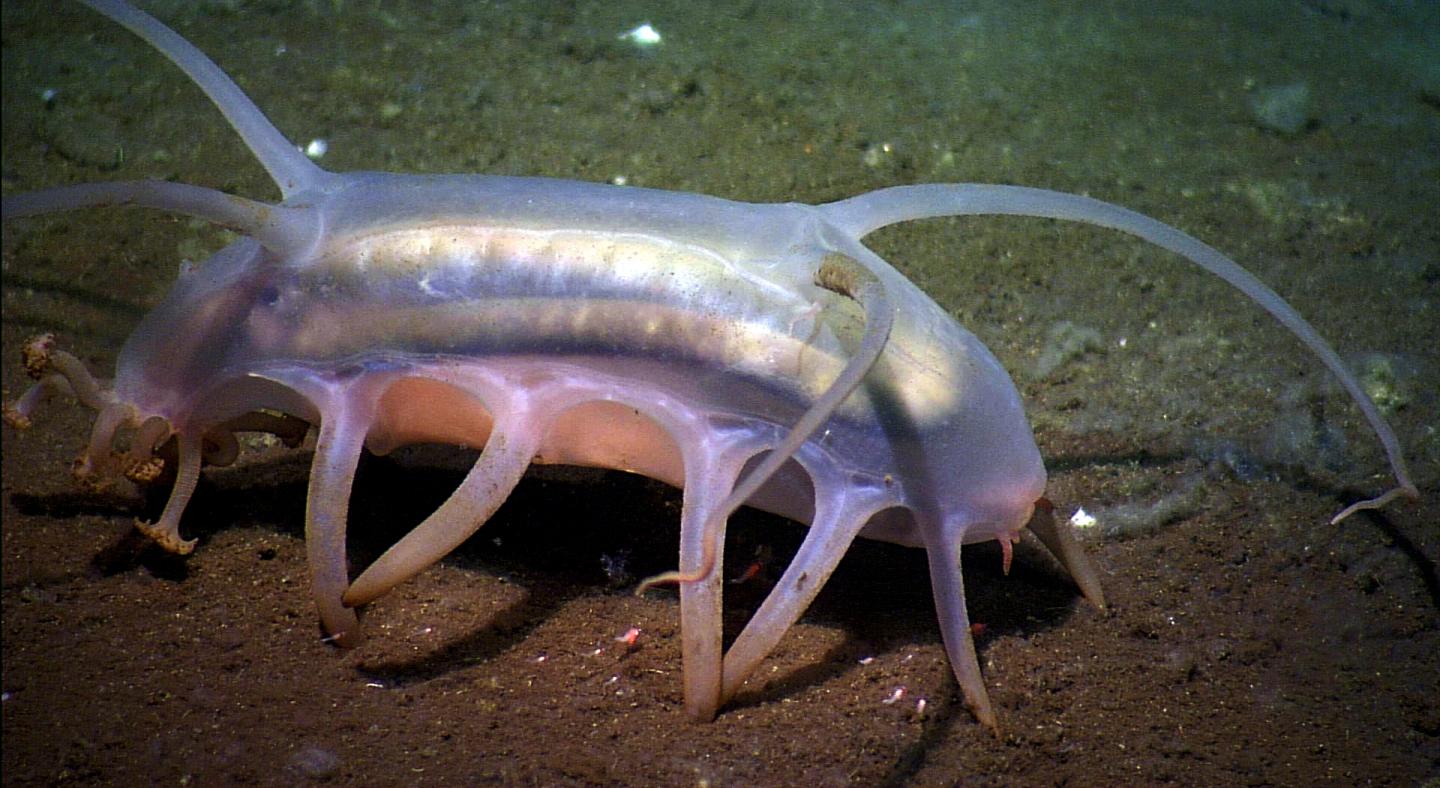Everything You Need to Know About Sea Pigs
Meet the swine-resembling, alien-like sea cucumbers of the deep

Yes, sea pigs are a thing. And they are quite the freakishly adorable deep-sea oddity.
Sea pigs are not actually pigs, but sea cucumbers. While physiologically nothing like pigs, their translucent, pink-tinged bodies, accompanied by several pairs of elongated tube feet (some located on their heads), do show some resemblance to their land-based namesake.

Wait, what is a sea cucumber?
Sea cucumbers are echinoderms, or marine invertebrates characterized by their fivefold radial symmetry (like starfish and sea urchins). Sea cucumbers have soft, elongated cylindrical bodies around 4-6 inches long—kind of like a bloated, water-filled sausage. Their unique structure requires them to streamline some body functions done separately in mammals—for example, sea cucumbers breathe out of their butts! Some species even use their butt as a second mouth.
Where do sea pigs live?
Sea pigs live in some of the deepest, darkest parts of the ocean. They also have water-filled, fragile bodies that nearly disintegrate when brought up from these extreme depths, ranging anywhere from 4,000 to 16,000 feet below the surface. For those reasons, they are very difficult to study.
What do they eat?
Sea pigs make use of their various face tentacles to scavenge some of the most delicious decayed materials and dead carcasses they can find on the seafloor. And luckily, deep-sea predators don’t try to eat or make bacon of sea pigs because their skin is laced with poison! That said, they do have some rather alarming parasites consuming their flesh from the inside out, but we will save those details for another blog.
How do they mate?
Nobody knows.
How long do they live?
Nobody knows. I told you they are mysterious!
Is there anything else I should know?
Yes! Sea pigs are valiant protectors of baby king crabs, who clutch onto sea pigs for protection. The deep, dark seafloor is an exposed and dangerous place for these juvenile crabs, and by hitching a ride on sea pigs, they have a greater chance of staying safe from potential predators.
I say, hats off to these deep-sea dwelling, butt-breathing, baby-crab-protecting sea cucumbers. While we don’t know everything about these quirky creatures, what we do know conveys just how weird and fascinating they are.
One last thing—while most people will never see an actual sea pig, if you’re now a big fan, plush sea pigs do exist!